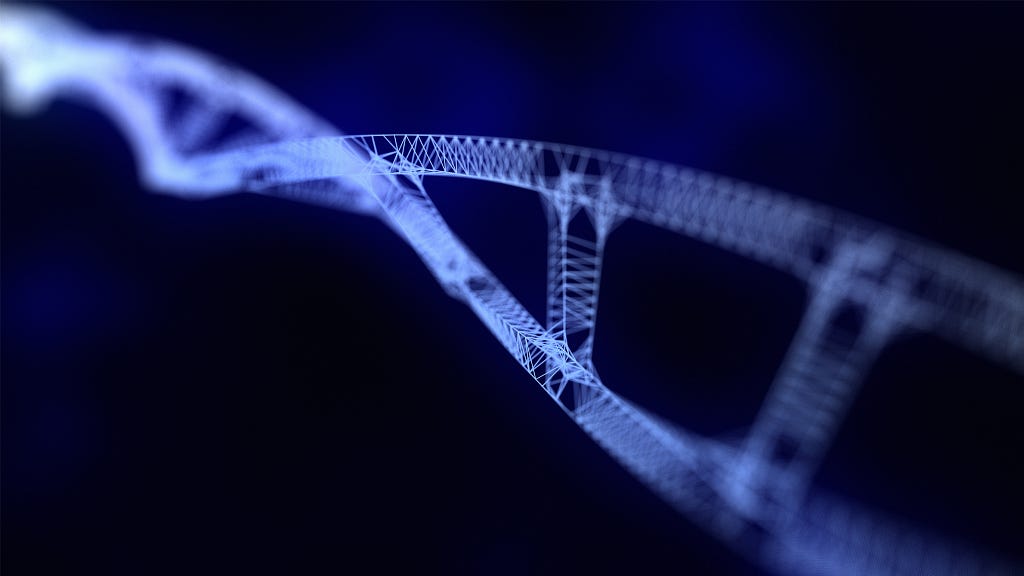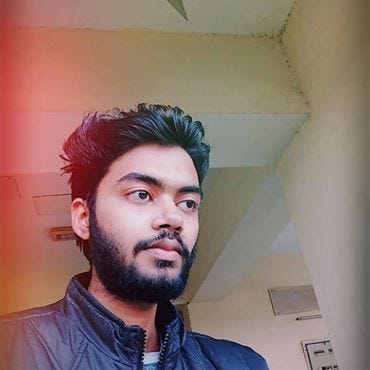Latest news about Bitcoin and all cryptocurrencies. Your daily crypto news habit.

One of the fundamental aspects of what makes us human is a desire to heal, to manage our pain, and to care for our loved ones.
So what I want to talk about today is the history of humankind’s ability to make medicines. I’ll talk about where we’ve been, where we are, and most importantly where we’re going. Specifically, I want to talk about our increasing ability to program living things to serve as medicines for us.
So let’s start at the very beginning. Our first medicines were discovered in nature. The healing arts are as old as humanity and what we found is if you go back in time as early as 2500 years ago, ancient Egyptians were using the bark of the willow tree to treat pain. We know that nature’s filled with examples, countless examples of tools and tricks that it uses to ward off invasive species. So our first medicines are discovered in nature and they remain relevant today.

The bark of the willow tree is the active ingredient in aspirin and we all know the story of how absent-minded scientists can leave a petri-dish on a lab bench and give us penicillin. But beyond discovering medicines in nature we also learned that we could use man-made tools to develop our own medicines and the most important tool to do that was, of course, chemistry. So going back in time, centuries, we see the early apothecaries developing novel molecules, molecules that don’t necessarily exist in nature, but that have a beneficial and therapeutic effect. You can actually draw a line from these early apothecaries to the modern pharmaceutical industry as it exists today.
Those chemistry based medicines have served us in countless ways to treat and manage diseases, but there’s a limitation to what we can do with chemistry. So beyond developing our own medicines, we had to find ways to produce medicines that we couldn’t make or synthesize with chemistry alone.
Let’s take insulin for example. As we all know insulin is critical, life-saving medicine for diabetics, but the problem is that it’s also a very large and complex molecule, and so it’s very difficult, if not impossible to synthesize insulin using chemistry.
So we had to go back to nature for this one. We would source insulin from places like pigs, which is not ideal because Pig insulin doesn’t look exactly like human insulin, thus you could have negative effects from being treated with Pig insulin. If we wanted human insulin, we had to go to cadavers which of course represents its own challenges. But almost exactly forty years ago, not too far from where we are, right here, scientists discovered a new tool, recombinant DNA that would allow us to produce complex molecules like insulin. The way they did it is they introduced the human insulin gene into a bacteria and coaxed that bacteria to make and produce insulin on our behalf. It was that discovery that gives rise to the modern biotechnology industry.
So there’s no question that by discovering medicines in nature, by developing them using tools like chemistry, by producing complex molecules with biotechnology-based tools, it’s given us a very valuable Arsenal and way to treat and manage a disease. But what’s also very interesting is that we’re on the cusp of something new. All through history, most of our medicines have acted on disease cells or the errant proteins that come from mutated genes and DNA or an invasive microbe. But with advances in synthetic biology, advances in our ability to use things like gene and cell engineering, we’re increasingly finding ways to make those same cells and genes and microbes, not the target of medicines but the medicines themselves.
So now we’re entering into the era of programming medicine. Now, what does that look like?
Well, in the case of a cell, it looks like engineering a cell to recognize cancer, activate the immune system to kill cancer. In the case of a gene, it’s introducing machinery that could spot a mutation and repair it and in the case of a microbe, it's re-engineering a microbe to produce a molecule, a therapeutic molecule that can be delivered inside of the body.
OK. So how do we do this? How do we actually turn cells, genes, and microbes into medicine?
Well, let’s go back to the beginning. So the way most medicines are made is to first have a theory on how medicine would work? What is its mechanism of action(MoA)? What is the specific biochemical processes that a molecule will impact in effect to have a therapeutic benefit? The second one is to have a very clear understanding of what the medicine does when it’s inside your body.
Keeping that in mind, drug developers have developed a framework to think about all of the various knobs and dials, that you have to optimize for a drug to be good medicine.
The Framework
- The first one is absorption. How is it absorbed inside of the body?
- The second one is, once it’s inside the body how does it get distributed throughout? How does it get to the site of disease?
- The third one is metabolism. How is it broken down by the body? This is critical to understand in order to decide how a drug is dosed.
- Fourth, how is it excreted? How is it eliminated or removed from the body? How do you ensure you are not leading a toxic build-up?
- And then, of course, having a very clear understanding of how medicine could be toxic to healthy cells.
These were the important and fundamental frameworks for understanding how medicine is designed and developed. So how does that apply to living things? What are the programming imperatives that you would need to ensure that cells, genes, and microbes can serve as good medicines?
So there are four fundamental things that these living things need to be able to do well to act as therapeutics.
- First one is that they need to be able to sense their environment. They need to be able to look and search for the presence of disease.
- The second thing is they need to be able to run predetermined programs, that are needed to execute a specific course of action.
- Next, these are living things. So they can move around. They can replicate. So, there needs to be a mechanism to contain them to the site of disease and to ensure that these living things don’t go out of bounds.
- Finally, they have to have an ability to sense when the disease state has been alleviated and terminate their function. Ideally, given that these are living things, terminate themselves if necessary.
So programming cells, genes, and microbes to sense, execute programs, to contain their actions, and to terminate themselves, all sounds really futuristic. But it’s really happening already.
I want to walk through a couple of examples of that. So let’s take cancer. In the case of cancer, it’s unfortunate that 40% of the men and women reading this article will likely be diagnosed with a form of cancer, sometime in their lives. So a long-standing goal of cancer therapy has been to trigger the immune system to fight it off. This is what the immune system does already. So what scientists have developed is a therapy, known as CAR T therapy. The first one was approved in 2017, that essentially takes out a cancer patients immune cells, engineers those cells to react to that patient’s own tumor, reintroduces those cells into the patient’s body, and now these CAR T cells circulate throughout the body to fight and kill off cancer.
This is an extraordinary advance in how we treat cancer. We’ve seen incredible results in terms of remission rates, and even cures. But for the most part today, this is limited to leukemias, and the reason for that is because we need to be able to design more sophisticated methods so that we can sense and execute programs for these T-cells.
What does that look like? How does it actually work?
Well, a few companies are working on this very problem. So, in the case of “sensing”, you can engineer cells to have very sophisticated sensors, like receptors and other tools that will allow them to search for signals of disease throughout the body. You could also have them search for specific cell types if you know the origin of cancer. Once the cell receives those signals, we can use gene circuits(this is what, companies like Asimov are working on) that actually can function as logic circuits, that will allow them to compute the inputs and determine the best course of action. In that case, it could be recruiting the immune system to kill, it could be releasing anti-cancer drugs, it could be any number of things, and ultimately terminating itself once the disease state has been alleviated.
So the future of cell therapy will depend on our ability to programming cells with increasing sophistication, to go after a broad range of cancers.
Now, moving on to gene therapy.
Gene therapy has been the holy grail for treating the approximately 5000 known diseases, that are caused by a single-gene mutation.
But gene therapy has been in winter for about twenty years. The reason why it’s been in the winter is that twenty years ago, at the University of Pennsylvania, a young man by the name of Jesse Gelsinger was the first person to die in a clinical trial for gene therapy. What killed him was essentially a containment problem. The gene therapy was introduced everywhere in the body and it resulted in a catastrophic immune response, and that led to his death.
So appropriately scientists gave pause, to think about, Well, how can we address this question of containment before we advanced new gene therapies?
Last year saw the approval of the first gene therapy, for treatment of a rare form of blindness. Now, what’s especially interesting about this is that it’s not a coincidence that blindness is the first therapy that they went after, with the gene therapy. That’s because the eye is actually a pretty well-contained organ. You can inject the DNA directly into the eye and the risk of leakiness is actually quite low. But there are countless diseases, genetic diseases that aren’t limited to the eye. So what is the future of gene therapy look like?
Well, gene therapy actually consists of two components.
- The first one is the vehicle for delivering the therapy.
- The second one is the machinery for actually doing the repair of the replacement of the mutations, so the cargo, so to speak.
Both of these are engineerable components.
So, in the case of the vehicle, scientists are working on redesigning and re-engineering the viruses that are going to have a very low immune response. So you don’t have that catastrophic event, and can be very specifically targeted to a specific cell type, and to that end, they will contain the risk of gene therapy going where it’s not supposed to go in the body.
Now, the second component, and I’m sure you’ve seen this in the news is producing the machinery to with very very high precision, edit genes and mutations as necessary. So CRISPR is, of course, the best-known example of advancements in this space.
So as we advance our ability to deliver gene therapy, as we advance our ability to actually, very precisely, edit the genes and only the genes that we need to edit, gene therapy will become applicable to a far broader range of diseases, not just limited to those that are easily contained biologically.
So, let’s move over to microbes.
As folks know, the microbiome is increasingly understood to be involved in a very broad range of diseases. It’s also known to be very central and critical for maintaining and regulating our health, and in fact, the microbiome has been associated with diseases ranging from inflammatory conditions, all immune diseases, all the way to neurological disorders. So it’s not surprising that scientists are looking for ways to use the microbiome as a therapeutic strategy, as they call it, the bugs as drugs.
The first clinical trial to do this is already ongoing. A company called SynLogic has engineered a microbe that allows it to break down an amino acid in a disease called phenylketonuria(PKU). In this(disease), patients that are unfortunately not able to break down that amino acid themselves, and the result of not being able to do that means toxic amounts of the amino acid build up, and that could have devastating effects. So, this Synlogic’s bug goes into the body and basically does that work for these patients.
Now, the problem with the microbiome therapies is that it’s largely a termination question. How do you ensure that this microbe, that you’ve introduced to the body, doesn’t run amok(doesn’t go out of control)?
The way they’ve addressed that is they have found a methodology to use a bug that has a very short half-life, and so it essentially eliminates itself after a few days.
But, we can do better.
The future is to engineer microbes that are much more sophisticated in their ability to terminate their own function. So imagine for a second, you have a disease like Crohn’s. You take a pill. The engineered bugs go into your system. They sense the inflammatory condition. They release an anti-inflammatory and they alleviate the condition. You could program these cells so that they do that in such a way that they stay inactive when there are no inflammatory markers in the in the system. If you want it to be doubly sure(about the microbiome termination), you couldn’t engineer a kill switch. So, when the condition is alleviated, you can take another pill, and the bug will be eliminated.
So the future of microbiome therapy is also incredibly promising, and so what I want to end on is just to give you a sense of where we are going.
This is an extraordinary moment in time for medicine. With these advances, every time that we build and engineer the building blocks for living things to sense their environment, execute programs, contain themselves, and learn how to terminate their function. Like programming, every successive generation of these medicines will get increasingly more sophisticated, increasingly more effective, and more broadly applicable to a broader and broader range of diseases. What’s particularly exciting about this moment in time is that when we program these Living medicines, they essentially become a part of us and so in their own way we’re reprogramming them so that they can, in turn, reprogram us. As we can see in leukemia, as we can see in inherited forms of blindness, as we can see in PKU, these living medicines are finally leading us to where we’ve always wanted to be, which is to find cures.
Thanks for reading;)
Learned something? Press and hold the 👏 to say “thanks!” and help others find this article.
Hold down the clap button if you liked the content! It helps me gain exposure.
About the Author
Vaibhav Saini is a Co-Founder of TowardsBlockchain, an MIT Cambridge Innovation Center incubated startup.
He works as Senior blockchain developer and has worked on several blockchain platforms including Ethereum, Quorum, EOS, Nano, Hashgraph, IOTA etc.
He is a Speaker, Writer and a drop-out from IIT Delhi.
Want to learn more? Check out my previous articles.
- Future and Impact of Autonomous Automobiles on the World: PART 1
- ConsensusPedia: An Encyclopedia of 30 Consensus Algorithms
- Getting Deep Into Ethereum: How Data Is Stored In Ethereum?
- Difference between SideChains and State Channels
- ContractPedia: An Encyclopedia of 40 Smart Contract Platforms
Clap 50 times and follow me on Twitter: @vasa_develop
Programming Medicines was originally published in Hacker Noon on Medium, where people are continuing the conversation by highlighting and responding to this story.
Disclaimer
The views and opinions expressed in this article are solely those of the authors and do not reflect the views of Bitcoin Insider. Every investment and trading move involves risk - this is especially true for cryptocurrencies given their volatility. We strongly advise our readers to conduct their own research when making a decision.

